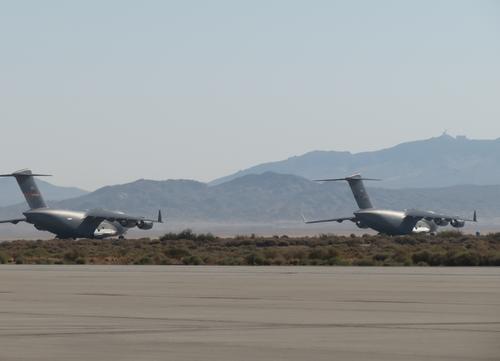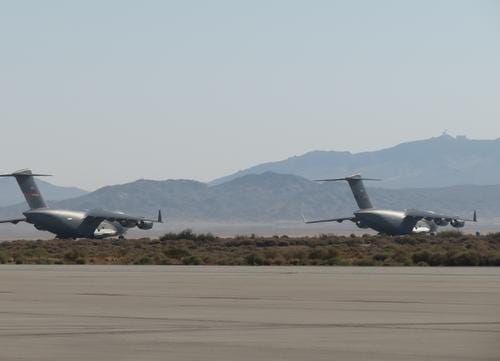Vortex Surfing Technique Conserves Fuel
October 24, 2012

Most people think of surfing as something that's done on water, but the Air Force Research Lab (AFRL) is trying to use vortex surfing -- a technique similar to what bicycle racers and migrating birds do when they cluster in groups to draft off one another -- to help aircraft conserve fuel by flying close together in formation.
Using C-17 aircraft in tests on Sept. 6 and Oct. 2, the AFRL determined that it can save 10 percent on fuel on long-haul flights by allowing two or more aircraft to fly together for a reduced drag effect.
The Air Force is formally calling the concept Surfing Aircraft Vortices for Energy ($AVE), Dr. Donald Erbschloe, chief scientist for the Air Mobility Command, said in a press release.

The tests involved two C-17s, one of which trailed the other, surfing its vortex and staying in position on its updraft to maintain lift without burning extra fuel. Flying this way also reduces wind resistance on the aircraft. This method could save the Air Mobility Command -- which flies an average of 80,000 flights a year -- millions of dollars in fuel costs, Erbschloe said.
The Air Force used C-17s because their size and mobility make it easier to maintain formations, and they don't need to trail too closely behind another plane to achieve vortex surfing, according to the AFRL. "The test flights were flown at longitudinal separations of 4,000 or greater," William Blake, one of the developers of the program, said in the release.
Engineers were able to modify the C-17s' formation flight system software to maintain proper flight position using the auto-pilot and auto-throttle systems. This allowed the planes to hold their position "extremely well -- even close to the vortex," Capt. Zachary Schaffer, one of the test pilots, said in the release. "The flight conditions were very safe; this was as hands-off as any current formation flying we do." However, pilots reported different levels of ride quality, leaving room for improvement, according to the AFRL.
Another test pilot, Maj. Eric Bippert, said in the press release that the lab will continue to analyze data from the flights to try to find the correct balance between a smooth ride and optimized fuel efficiency before employing vortex surfing in missions.
The US military has been exploring numerous ways to make its vessels -- especially those running on fossil fuels -- more efficient. For example, the Navy recently said it was exploring a way to turn seawater into jet fuel. And the Army is working on a number of ways to use alternative energy sources.
Related posts:
About the Author(s)
You May Also Like



